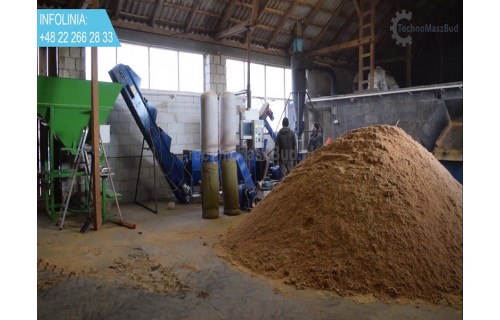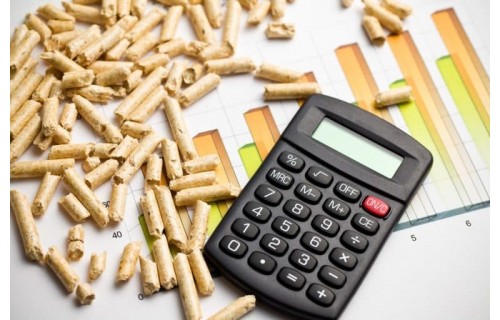MISTAKES WHEN WORKING WITH PELLET MILL / GRANULATOR

We decided to collect and explain the most common questions users have about working with the pelletizer, while pointing out potential errors that may occur.
Here are the most common causes of problems:
-
Inadequate moisture content of the raw material for pellet production (too high or too low).
-
Pelletizer matrix improperly matched to the type of raw material being processed
-
Incorrect setting of the gap between the die and the rollers
-
Pelletizer with inadequate capacity
-
Improper fraction of raw materials
-
Neglect of maintenance of pelletizer
-
Voltage jumps
-
Entrance of solid particles into the working part
Inadequate moisture content of raw material for pellet production
One of the most common questions from users is "Why do pellets spill in their hands?". The answer is simple: the key parameter is the moisture content of the raw material. For pellet production, the optimal moisture level is 12-14%, while for feedstocks it is 17-18%.
Specialized meters are used to accurately determine the moisture content of the raw material. When buying raw materials from a supplier, it is worth verifying the declared parameters. If necessary, a dryer or humidifier may come in handy to achieve optimum moisture content.
Pelletizer matrix incorrectly matched to the type of raw material being processed
Each type of raw material requires the right pressure during the pelleting process. In order to obtain durable, high-quality pellets that will not crumble, it is essential to select the right die.
When selecting a die, consider the following parameters:
-
Diameter of the die holes
-
Angle of the die holes
-
The thickness of the die
When purchasing a pelletizer, it is worth consulting with the manufacturer, who will help select the right die for the specifics of the raw material to be processed.
Incorrect setting of the gap between the die and the rollers
The correct setting of the gap between the die and the rollers has a direct effect on:
-
Granulator performance
-
Energy consumption
-
The service life of the die and rollers
The recommended average spacing is 0.05 to 0.3 mm.
Pelletizer or granulator with inadequate capacity
When choosing a granulator, a key consideration is motor power, which directly affects the performance of the machine. For pelleting feed, lower-powered models may be sufficient. However, for pelletizing sawdust, especially those with low lignin content, it is necessary to choose more powerful equipment.
If you choose a low-powered pelletizer and want to produce pellets from hard woods such as oak, linden, birch, alder, this will put undue strain on the working nodes, resulting in faster wear and tear or damage to the pelletizer. Also, do not try to pelletize raw material that is not designed for the type of machine.
Improper fraction of raw materials
For the pelleting process to run smoothly, it is necessary to pre-prepare raw material of the correct fraction. Compact and affordable pelletizer models usually do not have built-in grinders.
Introducing raw materials of varying fractions into the pelletizer can lead to equipment failure. There are two solutions to this problem: grinding raw materials on a separate machine or ensuring a constant supply of raw materials of the desired fraction.
The optimal raw material particle size should be 1-2 mm smaller than the diameter of the holes in the die.
Neglect of pelletizer maintenance
A common operating error is the lack of regular maintenance of pelletizer components. Rollers and bearings are constantly exposed to unfavorable factors, such as:
-
High temperatures
-
High loads
-
Moisture
-
Dust
Therefore, it is recommended to lubricate the rollers every 2-3 hours of pelletizer operation.
Voltage fluctuations
Even normal voltage fluctuations in the electrical grid can adversely affect the operation of the pelletizer and lead to its failure. It is necessary to ensure a stable power supply and use protection against voltage spikes, using specialized equipment for this purpose.
Particulate matter getting into the working section
Another mistake is inaccurate inspection of the raw material by the operator before loading it into the pelletizer. Solid particles, hard pieces of wood and other undesirable objects that may be in the storage area can get into the material. To prevent this, the raw material should be thoroughly inspected each time before use.
Following these simple rules will significantly extend the life of the pelletizer and allow you to obtain a high-quality finished product.
We hope that you will find this information helpful and avoid mistakes when working with the pelletizer. If you have any questions about replacing consumables or ordering lubricants, feel free to contact our specialists.












